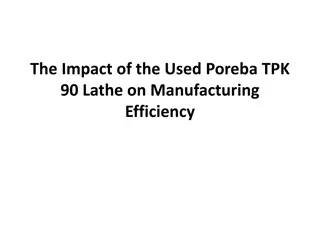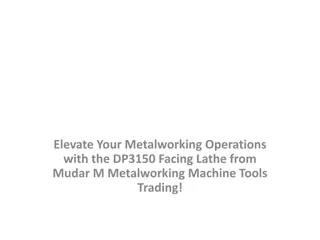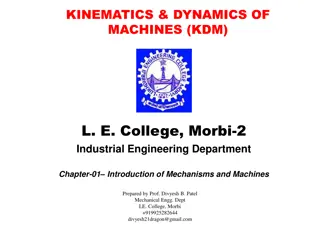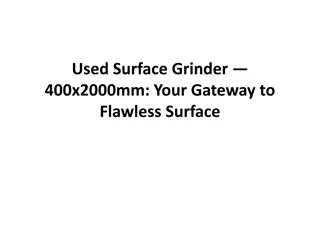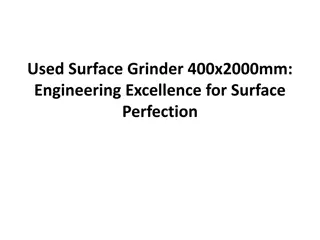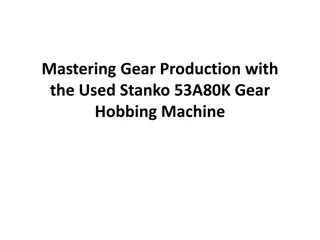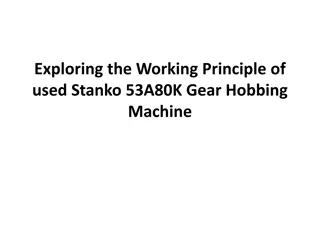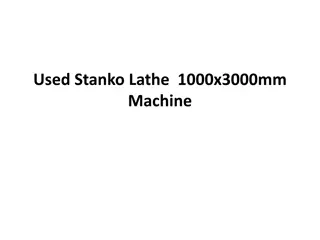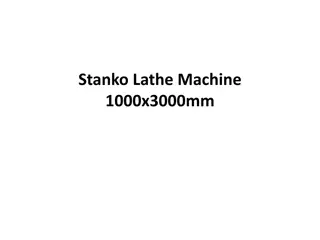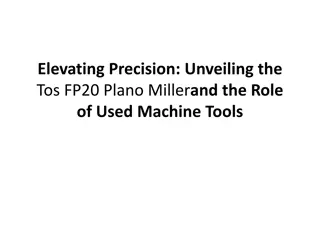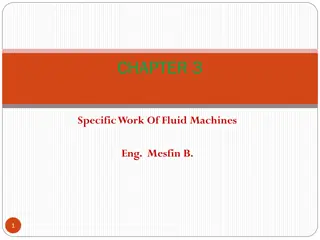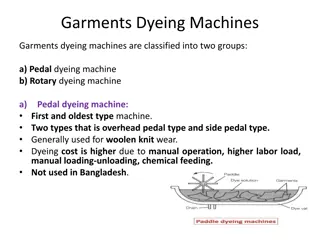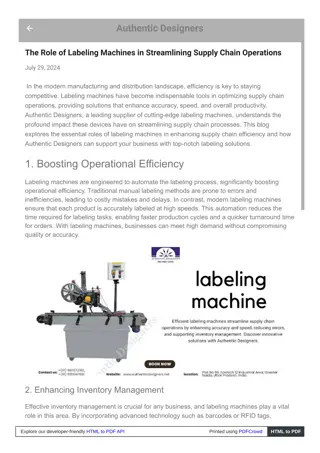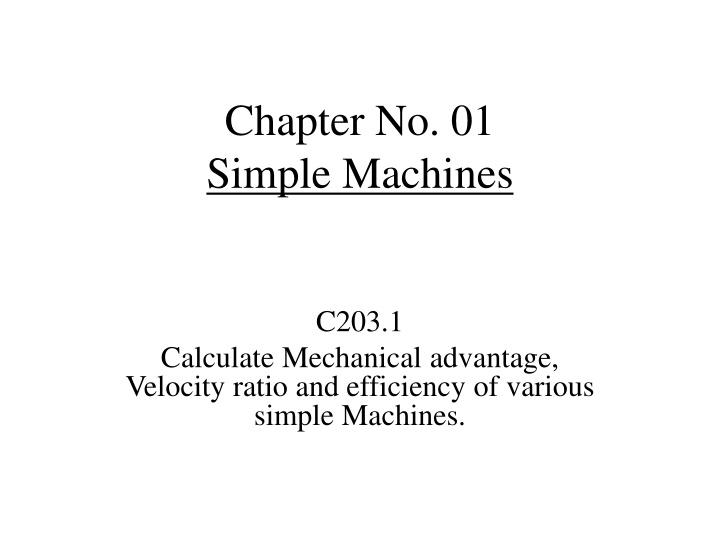
Calculating Mechanical Advantage, Velocity Ratios, and Efficiency of Simple Machines
Explore the concepts of mechanical advantage, velocity ratio, and efficiency in various simple machines such as axle and wheel, worm and worm-wheel, crab winch, and more. Understand the equations and principles behind these machines to enhance your knowledge of basic mechanics.
Download Presentation

Please find below an Image/Link to download the presentation.
The content on the website is provided AS IS for your information and personal use only. It may not be sold, licensed, or shared on other websites without obtaining consent from the author. If you encounter any issues during the download, it is possible that the publisher has removed the file from their server.
You are allowed to download the files provided on this website for personal or commercial use, subject to the condition that they are used lawfully. All files are the property of their respective owners.
The content on the website is provided AS IS for your information and personal use only. It may not be sold, licensed, or shared on other websites without obtaining consent from the author.
E N D
Presentation Transcript
Chapter No. 01 Simple Machines C203.1 Calculate Mechanical advantage, Velocity ratio and efficiency of various simple Machines.
Basic Concepts Load (W) Effort (P) Mechanical Advantage (M.A.) = = Velocity Ratio (V.R.) = Efficiency = x 100
Losses (Effort and Load) Ideal Effort (Pi) = Effort lost in friction (Pf) = P-Pi Ideal Load (Wi) = PxV.R. Load lost in friction (Wf ) = Wi - W
Law of Machine Effort (P) Equation Of straight Line P = mW + C P = Effort required to lift load m = slope of line W = Load lifted by the machine C = Effort required to start the Machine C Load (W)
Simple axle and Wheel Velocity Ratio =
Differential Axle and Wheel Velocity Ratio =
Single Purchase Crab Winch Velocity Ratio =
Double Purchase Crab Winch Velocity Ratio =
Worm and Worm-Wheel Velocity Ratio =
Simple Screw Jack P Velocity Ratio =

